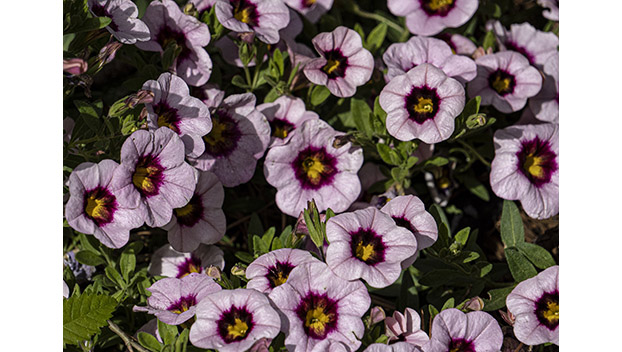Through the garden gate: Plants that thrive in hot summer weather
Published 12:03 am Saturday, August 5, 2023

- The popcorn plant has large spikes of showy yellow blooms and buds encased in nearly black bracts.
|
Getting your Trinity Audio player ready...
|
It’s hot and humid and my garden has a bad case of the blahs. Truth be told, so do I. We both need an injection of enthusiasm and pep.
Almost by chance, I’ve found a plant that’s perfect for this situation, the popcorn plant, a member of the Legume Family. It’s a native of tropical central and eastern Africa where it grows in disturbed areas. While it may be considered a weedy plant in Africa, it’s been introduced here for use as a garden ornamental and novelty plant.
The popcorn plant is a multi-branching shrub that grows 3 to 5 feet tall and nearly as wide. It has small oval, leathery compound leaves that are bright green. Rub the leaves between your fingers and the leaves give off a scent remarkably like that of hot buttered popcorn. In fact, the smell is strong enough to evoke memories of childhood movie matinees. In addition to attractive foliage, the popcorn plant has large racemes of bright yellow flowers that emerge from buds covered with attractive dark brown to blackish bracts.
Here in Virginia, the popcorn plant is a summer garden annual that thrives in our hot, humid summer weather. It blooms from late spring until frost and is especially attractive when planted with other bold tropical plants, such as elephant ears, banana trees, and dahlias. The popcorn plant is easy to grow; just plant it in full sun, in rich, well-drained soil. Fertilize and water it regularly.

The calibrachoa looks like a miniature petunia.
If you’re looking for a smaller plant, then consider the calibrachoa, the petunia look-alike that has its own genus named after the Mexican botanist Antonio de la Cal y Bracho. It was the 2018 flowering annual of the year and, since then, has become one of the most popular annuals available at garden centers. To meet growing consumer demand, hybridizers have produced plants with single and double blooms in a wide array of colors, including deep purple, pink, yellow, red, orange, bronze, and coppery red. There are also blooms with stripes and spots, and both velvety textures and pearlescent sheens.
The calibrachoa, or callie as it’s often called, is a low-growing, trailing plant typically covered with scores of blooms. Like the petunia, the calibrachoa works well as a ground cover, in hanging baskets, and as a spiller in container plantings. It’s an excellent choice for filling in bare spots at the front of mixed borders.
The calibrachoa grows best in rich, well-drained soil and in full sun. It needs at least six hours of sun daily to produce the most flowers. Deadheading isn’t necessary. This plant is a heavy feeder requiring regular applications of fertilizer; it also benefits from being cut back in late summer. Although not considered winter hardy outside of zone 9, my plants have overwintered successfully for three years.
Summer is here; it’s a good time to add some plants to the garden that love hot weather. It’s also time for us gardeners to slow down a bit, enjoy the heavy scent of the magnolia blooms, and to stay in the shade.
Dr. Cynthia Wood is a master gardener. Her email address is cynthia.crewe23930@gmail.com.





